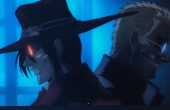OkaNaimo0819
Contributing writer for The Artifice.
Contributor III
- Plebian Penman
- Lurker
- Pssst
- Hand Raiser
- Sharp-Eyed Citizen
- Town Watch
- Detective Deskman
- Penman Patrol
- ?
- Articles
4 - Featured
2 - Comments
54
- Ext. Comments
49 - Processed
62 - Revisions
40
- Topics
8 - Topics Taken
5 - Notes
38
- Topics Proc.
101 - Topics Rev.
18
- Points
2648 - Rank
41 - Score
1615
Latest Articles
Latest Topics
Historical Accuracy, Costumes, and the OscarsIn this day and age, historical accuracy is more important than ever. At least, to some people. When "Little Women" won the Oscar for Best Costume Design in 2019, a few people were unimpressed, given the inaccuracies of the costume design compared to what people would have worn at the time.
|
Doctors and Nurses on TVThanks to the COVID-19 pandemic, there's been a new spotlight shone on doctors, nurses, and other healthcare workers. To show support for those in the medical field, it's now time to evaluate the portrayal of both doctors and nurses in TV: particular tropes, harmful stereotypes, progress in the way women/LGBTQ/BIPOC characters are handled or portrayed. What are some examples of groundbreaking works in the genre? What are some terrible or offensive examples?
|
All Quiet on the Western Front: The Greatest War Novel of All Time?Remarque's All Quiet on the Western Front is considered the greatest war novel ever written. Why is this book singled out? What makes it so different from other literature about war? This article would examine themes, setting, and characters and look at why the book has remained so timeless. (Comparisons to the movie/s can also be made.)
|
Nuns in Horror MoviesNuns appear as antagonists in many horror films, from The Nun to The Conjuring 2. What's the fascination with them? What are the possible connotations/themes? Horror-themed TV series (e.g. American Horror Story) and video games with nuns can also be discussed, but the focus should be primarily on films.
|
Pending | The Symbolism of FishFish is an important staple of many cultures, whether as food, source of income, or a religious sign. Compare and contrast some of these symbolisms in religion and folklore. Is the fish seen as positive in some cultures? Negative? Has its meaning changed over time?
|
The Toll of Voice ActingSeason 5 of My Hero Academia has been delayed, not just because of COVID-19, but because one of the seiyuus (voice actors) is recovering from vocal cord surgery. Nobuhiko Okamoto plays Bakugo, a hot-tempered U.A. student who yells a lot, and it's not surprising that the role had a negative affect on Okamoto's voice.
|
Why Is the Yandere Trope So Popular?I've seen topics where people look at yandere games, financial success, etc. However, I don't think anyone's taken a good look as to why yandere is so popular. What is so appealing about psychotic stalking girls? As someone who is still very new to anime (even after 18 months!), I'd like more of an explanation about yandere, whether you can be a boy to be a yandere or if it's strictly a girl thing, and whether yandere characters like Yuno Gasai have had a negative impact on adolescent and teenage girls. This would be a very fun article, especially as, again, Yuno Gasai remains one of the more popular anime girls because of her yandere status.
|
The Portrayal of Demons in AnimeDemons are quite common in anime, whether it's the sexy Sebastian Michaelis from Black Butler or the lovable Inuyasha from the anime of the same name. In fact, demons are more common in mainstream anime than angels. And when they do interact, it's usually the demons that come out as the good guy. Why is that the case? What appeal do demons have? What are some other portrayals of demons? Note: You can focus on just humanoid demons, like Sebastian and Rin Okumura from Blue Exorcist, or you can expand it to include Inuyasha and creatures like Kurama from the Naruto series. For an additional challenge, you can also include interactions between angels and demons, like Sebastian and Ash/Angela, and compare the characters.
|
Latest Comments
| Men Written by Women: Dreamboats or Brutes? | |
This article went really in-depth. (Especially the section on children’s literature – I’m not going to think of The Secret Garden the same way again.) It really shows how much representation has changed, or how it appears to have changed. | Are Disability and Death Inextricable? |
I feel like, no matter what strides we take, disabled representation will be hit-or-miss unless people with disabilities or who have loved ones with disabilities create them. Even if an abled person is familiar with it, they’ll still be scrutinized because they’re “abled.” | Disney and Disability |
I didn’t expect Snape to end up in an article like this. Great work! | Autism in Media: Progressing, Yet Stuck |
My sister introduced me to this. We watched the “bootleg” version on YouTube, as well as the animatics. My favorite song is “All You Wanna Do.” Love the wordplay and innuendo. | Six: The Musical: The Little Musical That Could, Did, and Does |
Kronk is Yzma’s assistant/servant. | Disney Characters That Should Get Their Own Spinoffs |
I didn’t notice that! | Disney Characters That Should Get Their Own Spinoffs |
Using different styles of clothing easily establishes which faction/clique/class a character belongs to in a film. Divergent is one example, but The Breakfast Club probably illustrates it the best. | Costumes On Screen: How Clothing Has Enhanced Visual Storytelling |




Interesting. I love the different examples you mentioned – did not expect to see Dally (or any references to The Outsiders whatsoever) in here. Also, we’ll never get tired of bashing on Twilight, will we?